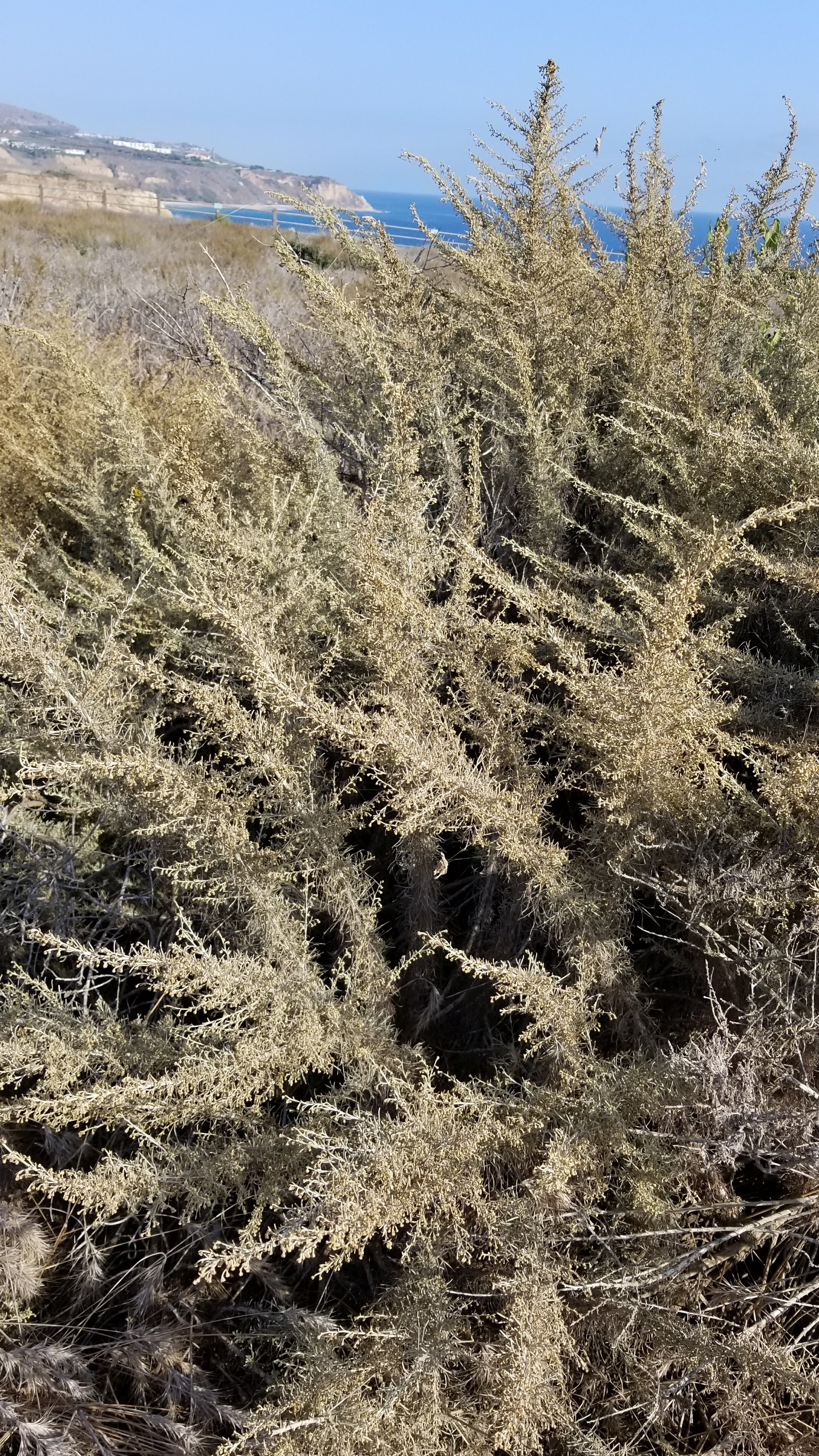by Daniel Horowitz
Spotting a coastal California Gnatcatcher (Polioptila californica californica) takes patience. They can be shy and elusive, never sitting still. They might appear in front of you when you’re least expecting it, only to dart away before you get a good look. And it’s necessary to get a good look because they can be easily confused with the more commonly seen Blue-gray Gnatcatcher. In fact, it wasn’t until recently that it was considered a species separate from the Blue-gray Gnatcatcher. Though elusive, the birds’ call can more easily be heard- a squealing “meeew” that sounds like a squeaking dog toy pleading for help.
The California Gnatcatcher can be difficult to identify. It is a small, gray bird with a black tail. It can be distinguished from the Blue-gray Gnatcatcher by the black crown that the male birds sport during the breeding season. To distinguish a female, or a look-alike male during the winter season, the best bet is to try to spot white edges on the underside of the tail feathers.
In Los Angeles, the coastal California Gnatcatcher can be seen, with patience, in natural areas that feature coastal sage scrub plant communities. The bird enjoys the same coastal areas that are appealing to humans as well, which makes visiting their habitat easy. But this has also created a problem for the smallish bird. Historically humans have placed greater value on developing the land rather than protecting the coastal sage scrub plant communities that the California Gnatcatcher calls home. The bird is not migratory—it depends on native sage scrub habitat to build nests. Human development of the coastal California gnatcatcher’s preferred habitat has led to a greatly reduced living and breeding area, and the bird is listed as Threatened by the U.S. Fish and Wildlife Service. Fortunately, the Endangered Species Act has allowed coastal sage scrub areas to be set aside as critical habitat which allows for special land management considerations.
Artemisia californica Photo Credit: Daniel Horowitz
Spending time in the coastal sage scrub community, you will encounter some wonderful flowering native plants including the vibrant yellow starburst flowers of the California Brittlebush (Encelia californica), the coastal Goldenbush (Isocoma menziesii), and the Lemonade Berry (Rhus integrifolia) with its sticky berries from which a tart tea can be made. The coastal Prickly Pear Cactus (Opuntia littoralis) grows in patches in coastal sage scrub communities, and among these patches the coastal cactus wren, another bird species of concern, builds its nest.
Encelia californica Photo Credit: Daniel Horowitz
In the spring of 2022, I conducted a study in some of these critical habitat areas. I used data from two citizen science apps to verify a correlation between the presence of California Gnatcatcher and the presence of native plants. After this preliminary analysis, I surveyed vegetation areas by randomly selecting square-shaped quadrats and related it to data from both iNaturalist and eBird. I calculated percent cover of native and non-native plant species within these quadrats. Areas where California Gnatcatchers were observed often correlated with two signature sage scrub plants: California Sagebrush (Artemisia californica) and California Buckwheat (Eriogonum fasiculatum). Overall, most all California Gnatcatcher observations occurred in locations that were dominant with native coastal sage scrub plants, whereas other areas within the same critical habitat that were overtaken by non-native species showed fewer observations.
Presence of California Gnatcatcher depended on presence of native species, in particular Artemesia californica
This association between bird and plant is consistent with previously published studies and promotes the importance of preserving our remaining sage scrub plant communities. Many of our local sage scrub areas have been disturbed, allowing for invasive plants to become a dominant presence.
I advocate visiting and appreciating our coastal sage scrub communities to enjoy the habitat, as the California Gnatcatcher is a shy bird and is not easily seen or heard. The plant habitats often feature vibrant colors and spectacular backdrops. These areas include: the Ballona Freshwater marsh area and the bluff trail behind Loyola Marymount, the south coast of Palos Verdes from the lighthouse to San Pedro, along the hiking trail behind the Stoneview Nature Center, the shrub communities around the Santa Fe Dam Nature Center, and in the hills sloping up from the reservoir in Bonelli Park. Listen for the kitten-like “meeew” or “zeeeer”.
Getting involved with local coastal sage scrub habitat restoration projects would benefit the coastal California gnatcatcher. The Audubon Center at Debs Park holds monthly community habitat restoration projects, listed on their web page. Tidal Influence has a few coastal community restoration projects in the Long Beach area. Restoring some of these areas would benefit humans using these areas for recreation and animals who depend on native plants. These animals include the previously mentioned coastal Cactus Wren and coastal Whiptail Blainsville Horned lizard.
The more time one spends in these habitats, the more likely a sighting of this elusive bird will happen. Any encounter with this small, gray bird with its striking black and white tail and kitten-like calls is an encounter to be savored.
Citations:
Audubon Center at Debs Park: https://debspark.audubon.org/volunteer/habitat-restoration
Beyers, J. L., Wirtz, W. O., & Greenlee, J. M. (1995). Vegetative characteristics of coastal sage scrub sites used by California Gnatcatchers: Implications for management in a fire-prone ecosystem. Proceedings of Fire Effects on Rare and Endangered Species and Habitats, 13-16.
Mitchell, T. (2017). California Gnatcatcher: Hero of the Coastal Sage Scrub Habitat. Buena Vista Audubon (retrieved 2022). https://bvaudubon.org/2017/04/22/california-gnatcatcher-hero-coastal-sage-scrub-habitat/
Mock, P. J. (retrieved 2022) California Gnatcatcher, sdplantatlas.org https://sdplantatlas.org/ge_files/pdf/California%20Gnatcatcher.pdf
Rubinoff, D. (2001). Evaluating the California Gnatcatcher as an Umbrella Species for Conservation of Southern California Coastal Sage Scrub. Conservation Biology, 15(5), 1374-1383. doi:10.1046/J.1523-1739.2001.00176.X
Tidal Influence: http://www.tidalinfluence.com/restoration.html
Winchell, C. S., & Doherty Jr, P. F. (2018). Restoring habitat for coastal California Gnatcatchers (Polioptila californica californica). The Condor: Ornithological Applications, 120(3), 581-595.





